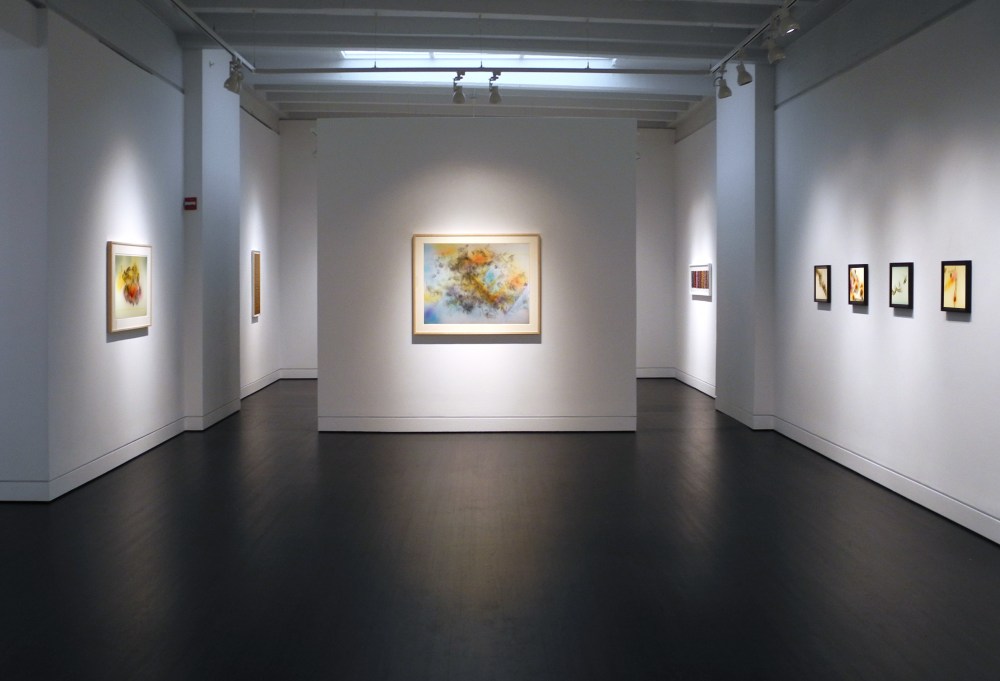
Rockne Krebs, an innovative artist who lived andworked in D.C. for nearly five decades, died in 2011. By then, many of his best works were lost to time. Krebs, a Navy Reserve man who worked in optics, was a formal inventor who made laser light his chosen medium. His light installations were the first to make use of lasers in art. But given all the advances in laser engineering since his pioneering works of the late 1960s through the ’80s (and successive restrictions on laser use), few of his sculptural light works would pack as much wow today, assuming they could be remounted in the first place.
Nevertheless, like so many D.C. artists of the last few decades, Krebs is due for another look. Artists from the Washington Color School and those who fell into its orbit—namely Sam Gilliam—have found new purchase in a contemporary art market dominated by formalist experimentation. “Rockne Krebs: The Smoke Drawings,” now on view at Hemphill Fine Arts, is a first step in reexamining Krebs’ career. This show includes work that is finer, in many respects, than any of his city-scaled laser-light displays.
“The Smoke Drawings” refers to a series of graphic works that Krebs made after receiving a Guggenheim Foundation grant in 1972. The award gave him license to focus on drawings and a means to escape his mounting ideas for public installations. The works he accomplished in 1973 are luminous and unfathomable: Per my limited research into the smoke drawings, no one’s quite certain how he made them.
More of a set of experiments than a fully articulated series, “The Smoke Drawings” comprises untitled paper works that the artist made using airbrush and candle smoke. The airbrush is simple to detect: Soft fields of color lend atmosphere to Krebs’ compositions. The candle smoke is easy to find, alright, but much harder to explain. The paper doesn’t appeared to be burned. In 2016, it might be easier for a layman to divine how his laser installations worked.
Certainly some of these drawings work better than others as compositions, suggesting that the process by which Krebs infused paper with candle smoke was not entirely his to control. At a glance, the drawings are wispy, barely there, bound or guided only slightly by Krebs’s judicious use of airbrush. Negative space is the defining feature of these roughly 10-by-10-inch artworks. Two larger, substantially denser and more colorful pieces suggest a culmination in Krebs’ strategy, but the smaller studies are stronger..
As if to underscore the Krebs revival, Hemphill has mounted in an attendant gallery room a stellar suite of works by D.C. luminaries: Leon Berkowitz, Alma Woodsey Thomas, Sam Gilliam, Thomas Downing, Anne Truitt, and Gene Davis. Quite a roster. Each of these artists is enjoying (or overdue for) reconsideration as explorers who discovered new formats of modernism that wouldn’t come into vogue for many years. “The Smoke Drawings” makes the case for Krebs as a contemporary worthy, albeit not with the work for which he is best known. “The Smoke Drawings” is a convincing show. Finding Krebs’s best work may mean